Overview of Attribution models
Attribution has five attribution model types out of the box that can be easily toggled between without corrupting any data. This allows you the flexibility to look at your return on ad spend in a variety of different environments.
First touch: giving credit to the first touch in the visitor journey
The first touch model will provide all the credit for any conversion to the first touch point in the visitor's journey. Below you can see an example of the visitor journey from 1/1 - 1/31.
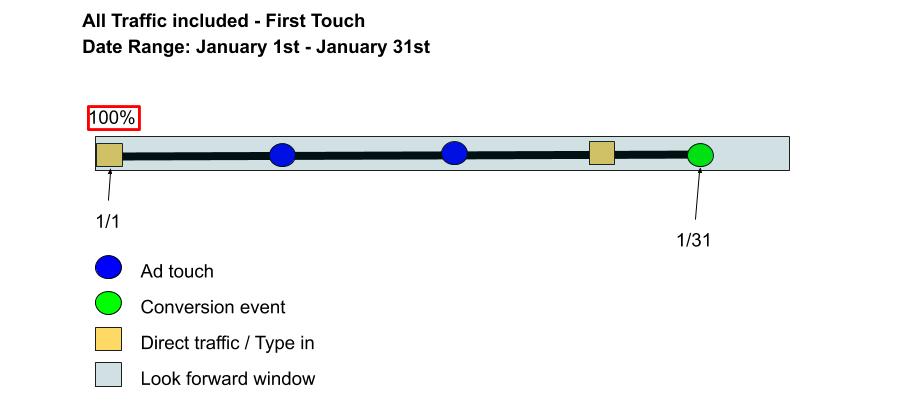
Notice above that the first 'direct traffic' touch on 1/1 will be given all credit for the conversion on 1/31.
The first touch model is great for looking at your top of the funnel efforts. For example, you may want to use first touch to see which channels are driving sign ups.
To break this down a little more, one of the reasons that people have trouble understanding attribution models is that there are a lot of rules to follow, and it's almost impossible for a human to keep track of everything for many users and many visits.
The best way to understand how Attribution works is to look at one user with multiple conversions over a timeline.
Consider this scenario, where a user has 6 visits over 12 days and 2 conversions. How would you allocate the conversions to each of these channels in each Attribution Model?
Date | Channel (visit) | Action |
5/1 | ||
5/4 | Adwords | |
5/5 | Direct | |
5/7 | ||
5/9 | Direct | Conversion $10 |
5/11 | Adwords | |
5/12 | Conversion $5 |
Understanding Date RangesWhen you select a date range in Attribution, the results shown are the visits that happened in that date range and the resulting conversions that came from those visits, even if they happened in a future date range.
Last touch: giving credit to the last touch
In direct contrast to the first touch model; the last touch model will provide all credit to the last touch prior to conversion.
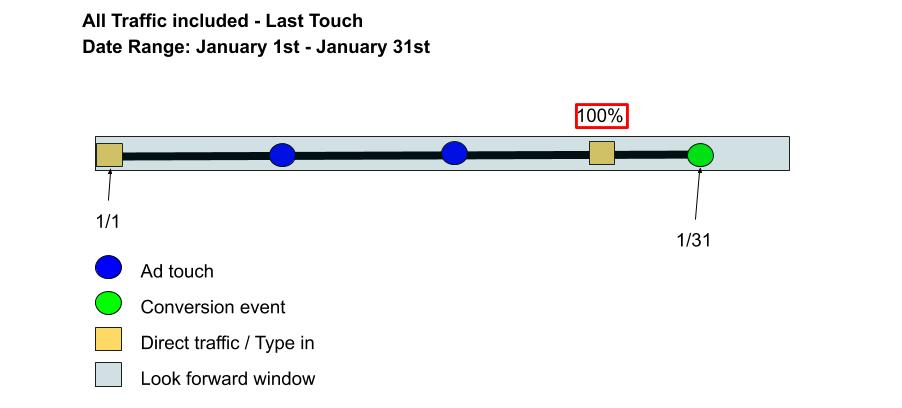
In the example above, all credit is given to the touch prior to conversion, the polar opposite of first-touch.
The last touch model is a great way of looking at your bottom of the funnel conversions. For example, you may run a email campaign in December and want to see which channels are specifically leading to purchases on your eCommerce site. One thing to note is that with the first or last touch model applied you are essentially removing the multi-touch aspect from Attribution.
Linear: giving credit equally per touch
The linear model provides equally weighted credit to each touch point in the visitor's journey.
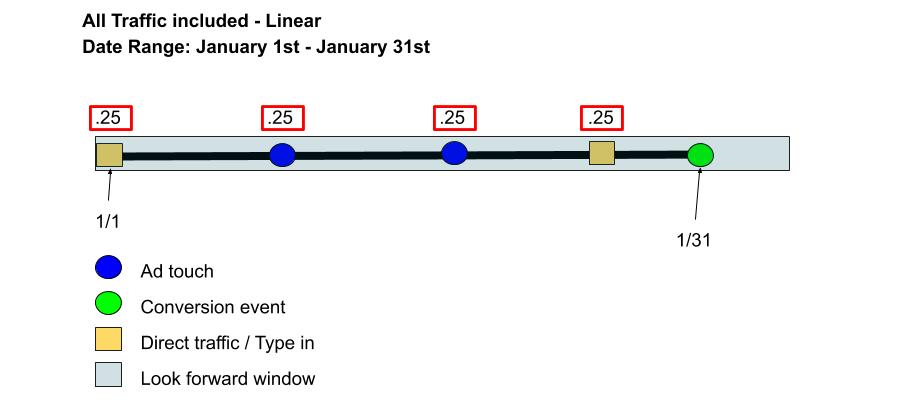
In the example above there are four touch points in total and because we have the linear model selected and our settings include all traffic, each touch point will split credit for the conversion equally at .25 each.
The linear model allows you to look at your return on ad spend across your marketing efforts for the entire length of your funnel equally. This is a great way to look at your marketing channels holistically providing equal credit to each touch along the visitor's journey.
Position based model: the u shaped model
This model allows you to set a value for the position of a touch in the visitor's journey. You can adjust this value by going to Settings > Project Settings > Position-based Attribution ratios. You are welcome to choose a ratio for the first and last touch, the middle will be split amongst the remaining touches.
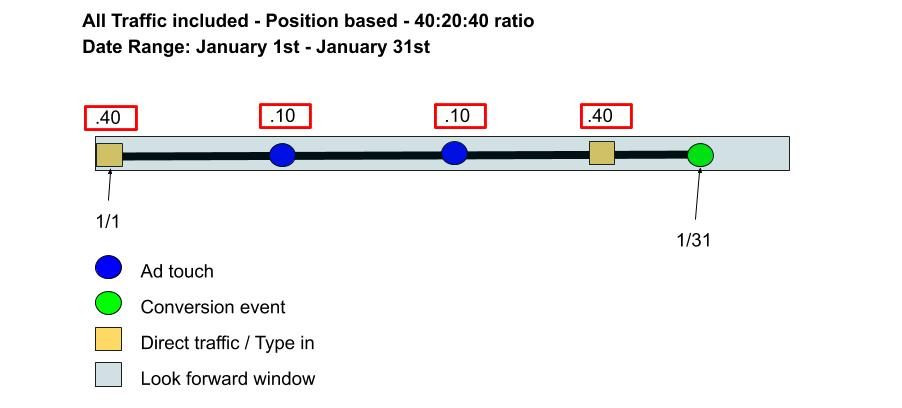
You may notice that although our middle ratio is set to 20% the two touches that exist in the middle of our example show .10 or 10% each.
When you choose the position based model any touches that exist between your two end points will split the middle ratio.
For example, if there were 6 touches the two endpoints would still receive 40% credit each, however the four touches in the middle would split the 20% in a linear fashion providing 5% to each, see the example below.
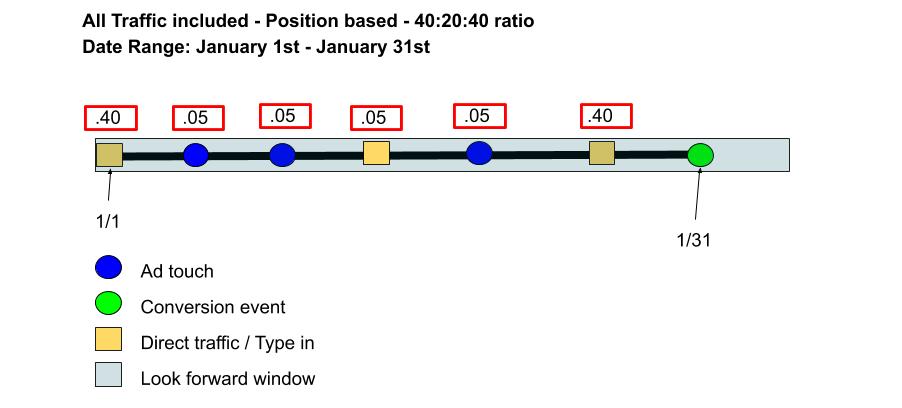
Time decay: greater credit to later funnel touches
This model will provide greater credit to the touches that occurred closest to the conversion using a 7 day basis.
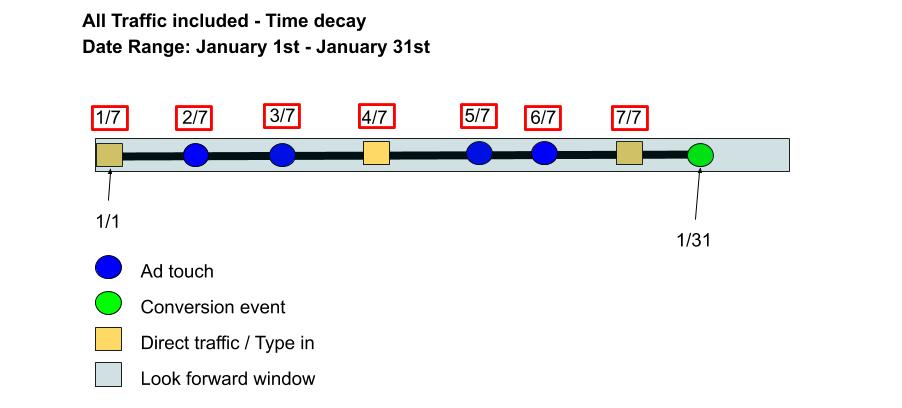
If the sales cycle involves only a short consideration phase, the Time Decay model may be appropriate.
This model is based on the concept of exponential decay and most heavily credits the touch points that occurred nearest to the time of conversion.
The Time Decay model has a default half-life of 7 days, meaning that a touchpoint occurring 7 days prior to a conversion will receive 1/2 the credit of a touchpoint that occurs on the day of conversion. Similarly, a touchpoint occurring 14 days prior will receive 1/4 the credit of a day-of-conversion touchpoint.
If you have any questions please contact [email protected]
Updated 3 months ago
